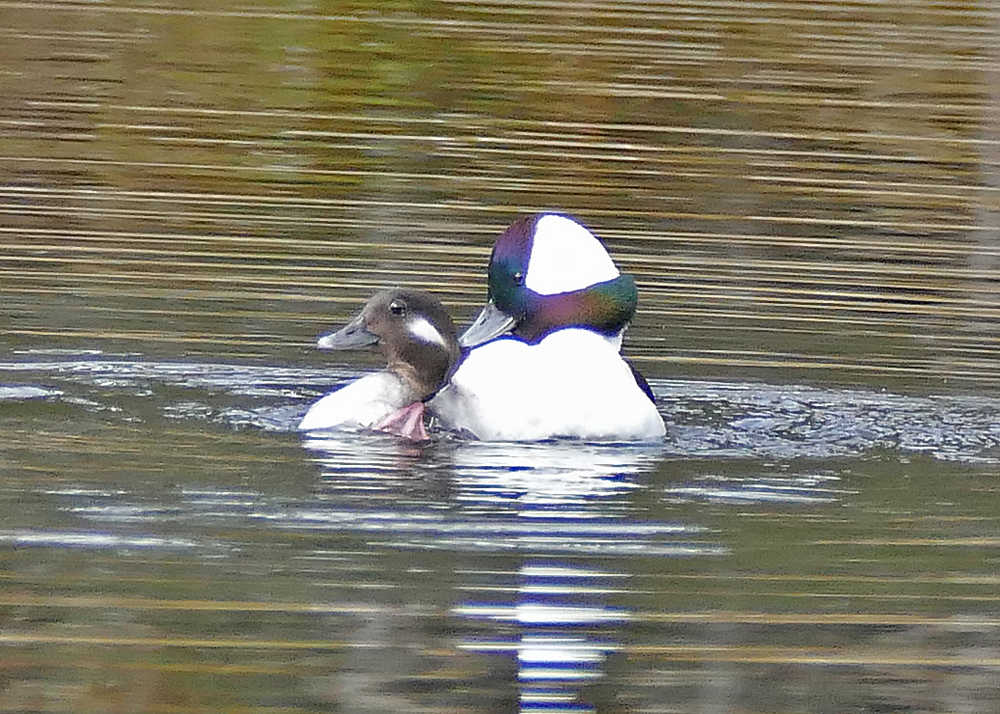April showers bring May flowers? Ha! The flowers are already here in profusion, what with the near-absence of a real winter and the coming of a very early spring.
Skunk cabbages stand as tall yellow sentinels (if deer haven’t nipped them off) in the marshy places. They send out their sweet aroma (not at all “skunky!”) and provide a cheery splash of color in the mostly gray-and-green forest. Yellow violets gleam along the forest trails, as the forest floor begins to green up. The white flowers of miners’ lettuce are showing, along with the delicate little flowers of fern-leaf goldthread. And the purple mountain saxifrage is going strong on rocky outcrops even in the shadier sites.
Blueberry bushes at low elevations have already dropped many of their little pinkish bells. The deeper pink flowers of salmonberry are borne on canes that are just sending out new leaves. In addition to the early-blooming felt-leaf willow, other kinds of willows are producing their catkins.
In many places, alders have already dropped their male catkins, which have released their pollen for the wind to carry to the waiting female cones. I’ve found lots of catkins lying on the ground under male cottonwood trees too, but for some unknown reason, a substantial number of these have released only some of their pollen. However, the best part (for me) of cottonwood flowering is the light, clear, sweet aroma that fills the air near a stand of these trees. Look on the ground below a tree and find the yellow-brown bud scales, and sniff ‘em!
I heard my first fox sparrow of the year in Sheep Creek Valley recently, along with the varied thrushes, robins, Pacific wrens and ruby-crowned kinglets, which have been singing for some time. Just a few days later, there were several singing fox sparrows in the valley. Although hermit thrushes are here, I’ve not yet heard them sing. I have two reports of chickadees cleaning out their nest cavities, and on one creek I have seen a male dipper on guard as his female incubates their clutch of eggs; with such an early start on the first brood, they should be able to rear a second one as well.
Here are some other sightings that were fun:
• A pair of ravens harassed an eagle as it sat in the top of a tree, diving at it and yelling. Poor old eagle just hunched its head and took the abuse. Were those cranky ravens defending a nest? It didn’t seem so; after several minutes of continual persecution, both ravens took off and disappeared in the distance.
• Out at the end of the Mendenhall Peninsula, under overhanging alders above the beach, I found a number of small piles of chewed-up, very clean barnacle shells. Some consumer had routinely used this place to off-load the shelly ballast after lunching on the prey. Who was the consumer? Maybe a raven or two, or perhaps some otters?
• One day we found five pairs of buffleheads on Cashew Lake in the Mendenhall Glacier Recreation area. Each pair cruised sedately, male and female side by side, occasionally diving, each pair in a different part of the lake. Suddenly a big kerfuffle broke out — with much flapping and splashing and squawking. One male had decided to approach another male’s female, and that was cause for battle. The intruder was chased off, but only temporarily. He was soon back again, and the uproar was repeated, several times. The female who was the object of interest seemed to float quietly at a little distance and let the males duke it out. I think the original status quo was restored, but who could be sure, without banded birds!
Buffleheads are the smallest diving duck in North America. They nest in the Interior, in boreal forest and aspen parklands, near small lakes and ponds, where they feed on aquatic insects. They nest in cavities made by large woodpeckers such as flickers, but readily use nest boxes too. If buffleheads try to use a cavity with an opening that is large, they may be outcompeted and even beaten up by goldeneyes that want the same cavity.
They are reported to pair up mainly in winter but also during northward spring migration. Courtship and sometimes even mating occur en route. Buffleheads often keep the same mate from year to year, according to researchers. The interactions we saw on Cashew Lake suggest that mate fidelity may be challenged at times. There’s more to be learned about all this!
• Mary F. Willson is a retired professor of ecology.

